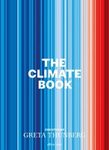Art / Photobook
By: Chris Linder(Photographer), Eric Scigliano(Author), Robert Max Holmes(Contributor), Susan Natali(Contributor), John Schade(Contributor), Theodore Roosevelt IV(Afterword by)
176 pages, colour photos
![The Big Thaw The Big Thaw]()
Click to have a closer look
About this book
Customer reviews
Biography
Related titles
About this book
Permafrost – dark, ice-flaked, permanently frozen ground that lies under tundra and boreal forests across our northern regions – covers more than 12 percent of the earth's land mass. It exists in places that seem otherworldly and unimaginably remote to most of us, but the changes taking place in the permafrost layer may ultimately affect the lives of every person on Earth.
In The Big Thaw, readers meet a diverse team of scientists and students who have been studying the permafrost and what lies beneath: a vast store of ancient carbon, more than four times the quantity found in all of today's forests, which is releasing carbon dioxide and methane as the permafrost melts. The release of all this carbon would alter Earth's climate forever. Braving endless hordes of mosquitoes, quicksand, and extreme temperatures, the researchers are racing against the clock to educate us all about the changes we must make in order to preserve Earth's carbon balance.
Customer Reviews
Biography
Eric Scigliano is a journalist and author with a longtime interest in climate change, the Arctic, and the alarming intersection between the two. He has been a science writer at the University of Washington and a staff writer and editor at several newspapers and magazines, and has written for National Geographic, New Scientist, Discover, Harper's, Technology Review, and many other national publications. Scigliano is the author of Michelangelo's Mountain and Seeing the Elephant: The Ties That Bind Elephants and Humans and coauthor, with Curtis Ebbesmeyer, of Flotsametrics and the Floating World. His writing has been featured in four photo books including, most recently, The Wild Edge: Freedom to Roam the Pacific Coast, from Braided River. His work has won Livingston and American Association for the Advancement of Science awards and has been included in Best American Science Writing.
Chris Linder is a professional photographer, filmmaker, and lecturer, with a master's degree from the Massachusetts Institute of Technology and the Woods Hole Oceanographic Institution. Chris lives in Potomac, Maryland.
Dr Robert Max Holmes is deputy director and senior scientist at the Woods Hole Research Center in Massachusetts. He lives in Falmouth, Massachusetts.
Dr Susan Natali is an associate scientist at the Woods Hole Research Center. She lives in Falmouth, Massachusetts.
John Schade is a Distinguished Visiting Scientist at the Woods Hole Research Center and the Education Coordinator for the Polaris Project. He currently lives in East Falmouth, Massachusetts.
Art / Photobook
By: Chris Linder(Photographer), Eric Scigliano(Author), Robert Max Holmes(Contributor), Susan Natali(Contributor), John Schade(Contributor), Theodore Roosevelt IV(Afterword by)
176 pages, colour photos
– 2020 Washington State Book Award Winner in General Nonfiction
– 2020 Gold Independent Publisher Book Award in Environment & Ecology
– 2019 Nautilus Grand Award Winner and Gold Winner in the Ecology and Environment
– 2019 Foreword INDIES Book of the Year Awards Honorable Mention in Ecology and Environment
"A warm, engrossing book about a chilling impact that threatens life on our planet [...] The Big Thaw has a you-are-there intimacy unusual for a book about science and scientists."
– Joel Connelly, SeattlePI
"Profusely illustrated throughout with full-color photography combined with an impressively informative commentary, The Big Thaw: Ancient Carbon, Modern Science, and a Race to Save the World is a critically important and unreservedly recommended addition to the personal reading lists of all environmental activists."
– Midwest Book Review
"I recommend this book unreservedly – it is well written, easy to read, full of magnificent full-color photographs and tells an uplifting story about students working in eastern Siberia and the Yukon-Kuskokwim area of Alaska. The book is an antidote to the depression and helplessness many of us feel in the face of climate change."
– Orlay Johnson, Northwest Aquatic and Marine Educators
"While you won't find simple answers here, the book lends depth to a problem whose alarm is beginning to sound. And the mini-profiles of a diverse group of scientists make this an inspiring gift."
– Colleen Stinchcombe, Ampersand
"An antidote to the depression and helplessness many feel in the face of climate change. In its splendid design, well-written text, and revealing photos of the Arctic world and those who probe the impact of thawing permafrost on the climate, this book perfectly captures this critical issue and those who are meeting the challenge."
– Kirkus Reviews (starred review)



































